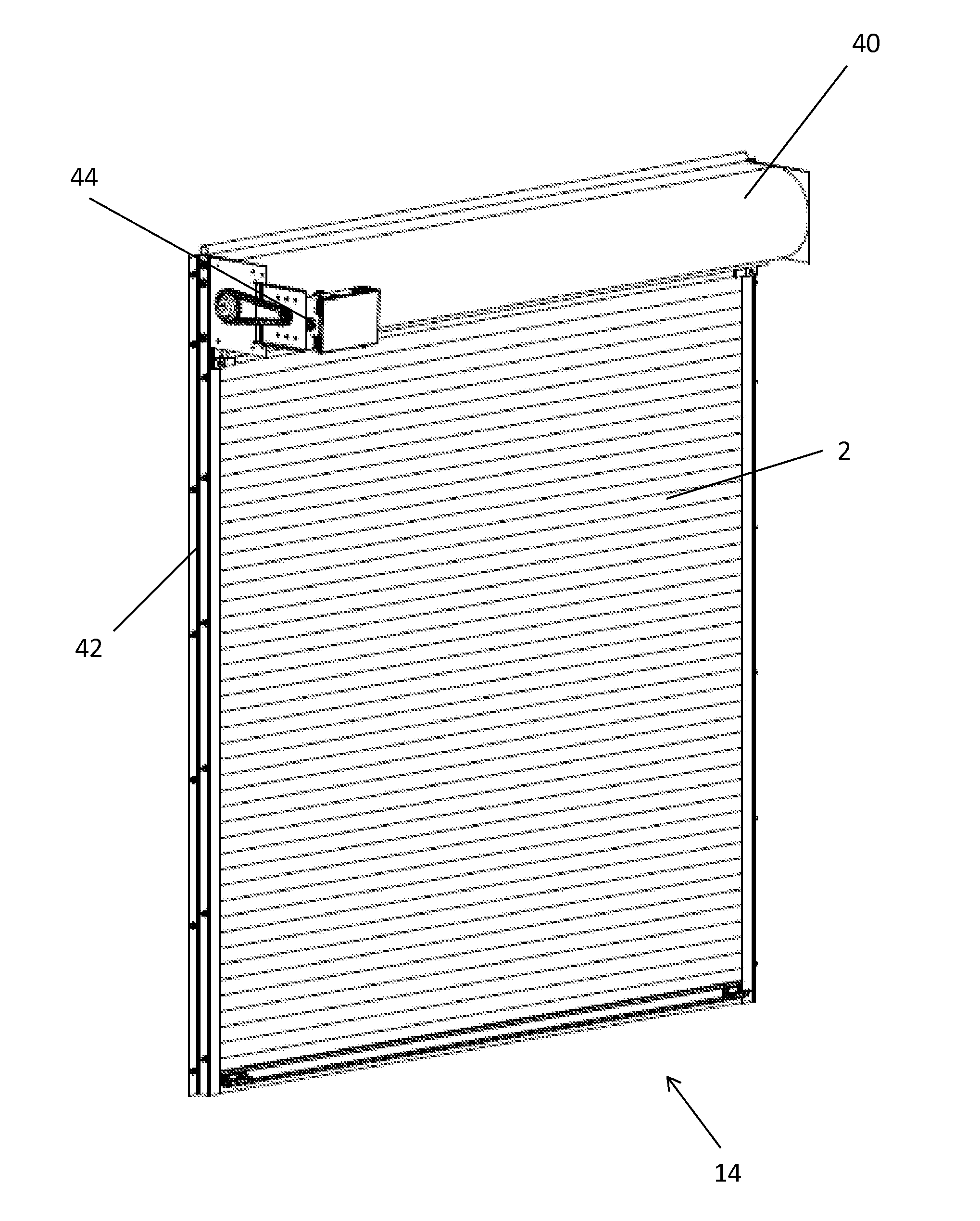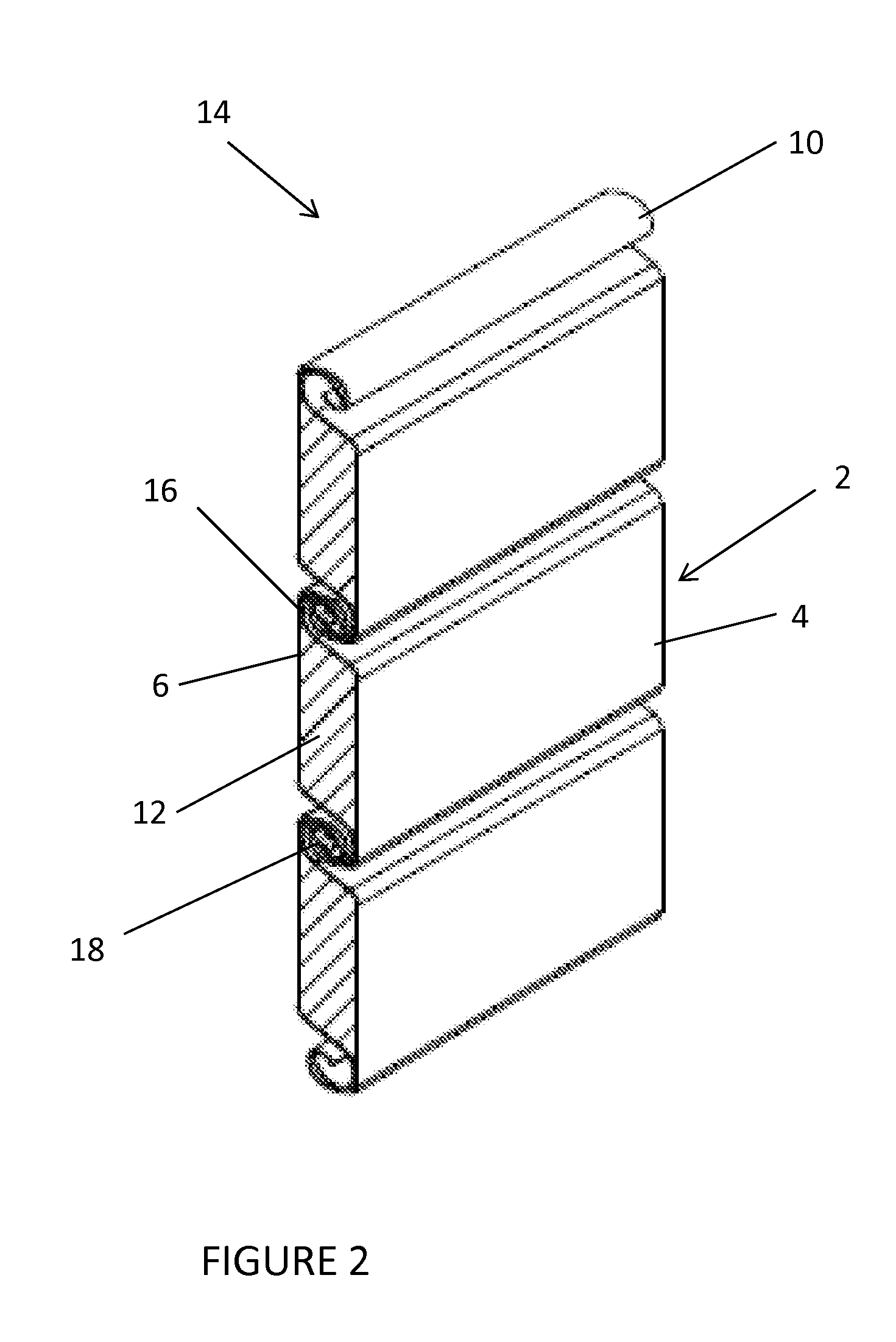Internally reinforced rolling door slat
a technology of internal reinforcement and rolling door slats, applied in the field of rolling doors, can solve problems such as limited window protection
- Summary
- Abstract
- Description
- Claims
- Application Information
AI Technical Summary
Benefits of technology
Problems solved by technology
Method used
Image
Examples
first embodiment
[0025]Referring now to FIG. 1, a cross section of the presently invented rolling door double slat 2. The invented double slat is constructed using two identical roll-formed slats—a front slat 4 and a back slat 6. The two identical slats 4 and 6 fit together when one has the reverse orientation of the other. When joined, the front and back slat 4, 6 form a central compartment 8, and an upper and lower joint curl 10. Between the two fitted slats 4, 6, is a reinforced core material 12. The front and back slat 4, 6 are built using steel, stainless steel, or another suitable formable metal. The reinforced core 12 material varies in construction based upon the embodiment of the double slat 2 used. This construction will be discussed further in the paragraphs that follow. When assembled, the invented double slat 2 would measure ⅞th an inch thick, 2½ inches tall, and cut in length to customer requirements. These measurements are meant to merely be illustrative rather than limiting. Other me...
second embodiment
[0029]The materials used for the reinforcement bar 22 and the core material 24 would vary depending on function and cost. The reinforcement bar 22 would be constructed of steel, hardened steel, lead, titanium, ballistic ceramic plates, or similarly bullet resistant materials known in the art. The core material 24 would be made of Kevlar, wood, expanded polystyrene, polyurethane, mineral wool, solid acrylic, or other suitable materials that would improve the properties of density, impact or blast absorption, deformation resistance, fire resistance, sound insulation, or heat insulation. An example material configuration of the double-slat 20, would include a hardened steel reinforcement bar 22 positioned in front of the rear slat 6 and a Kevlar core material 24 positioned behind the front slat 4. This example is merely intended to be illustrative, as any combination of the above reinforcement bar 22 and core material 24 materials would be an acceptable configuration of the present inv...
PUM
| Property | Measurement | Unit |
|---|---|---|
| internal volume | aaaaa | aaaaa |
| impact force resistance | aaaaa | aaaaa |
| force absorption | aaaaa | aaaaa |
Abstract
Description
Claims
Application Information
 Login to View More
Login to View More - R&D
- Intellectual Property
- Life Sciences
- Materials
- Tech Scout
- Unparalleled Data Quality
- Higher Quality Content
- 60% Fewer Hallucinations
Browse by: Latest US Patents, China's latest patents, Technical Efficacy Thesaurus, Application Domain, Technology Topic, Popular Technical Reports.
© 2025 PatSnap. All rights reserved.Legal|Privacy policy|Modern Slavery Act Transparency Statement|Sitemap|About US| Contact US: help@patsnap.com



